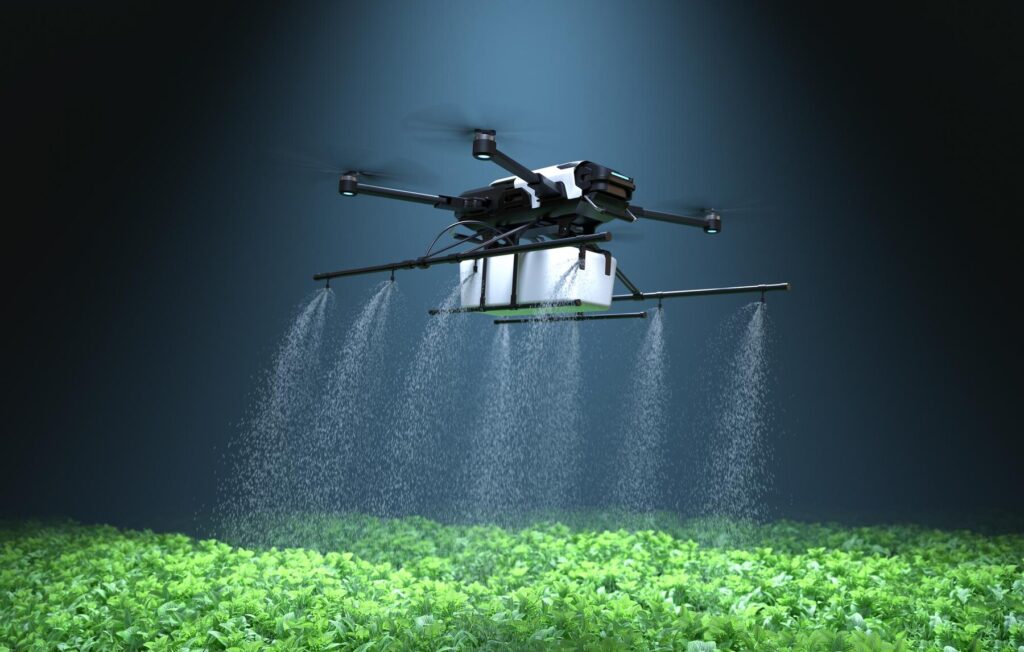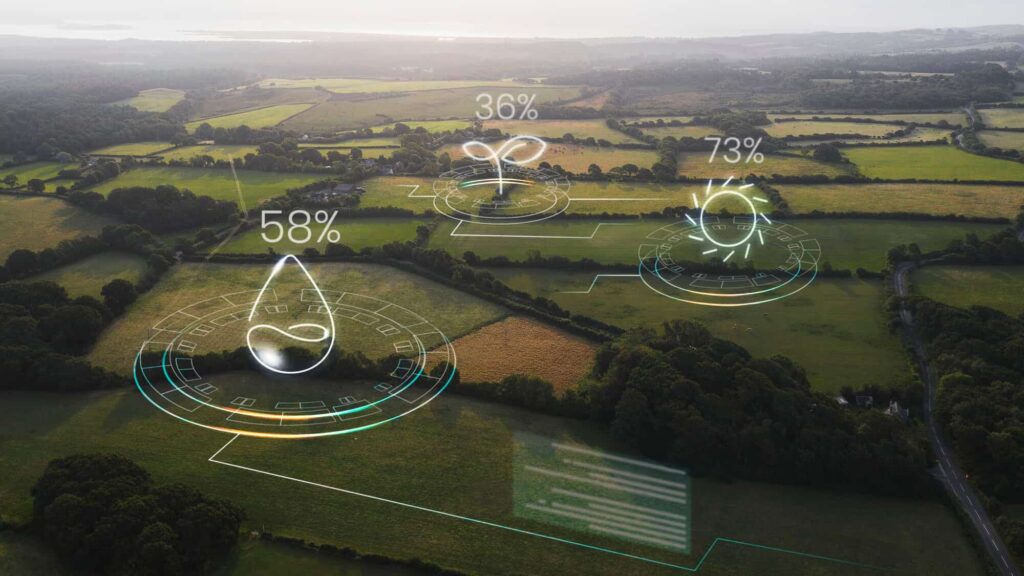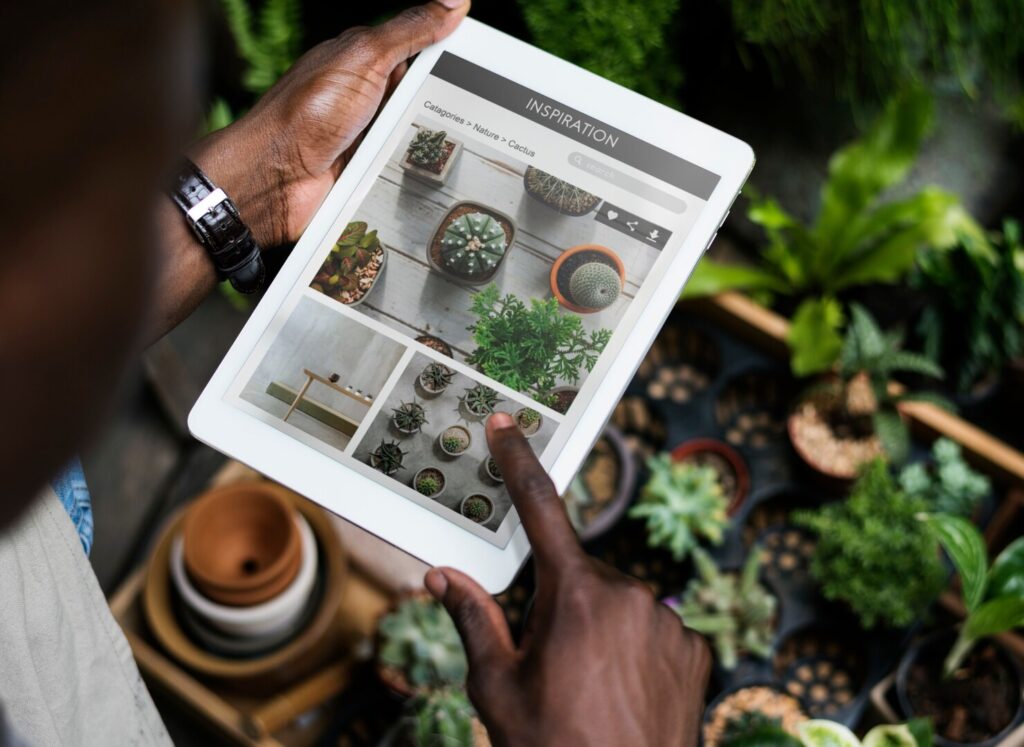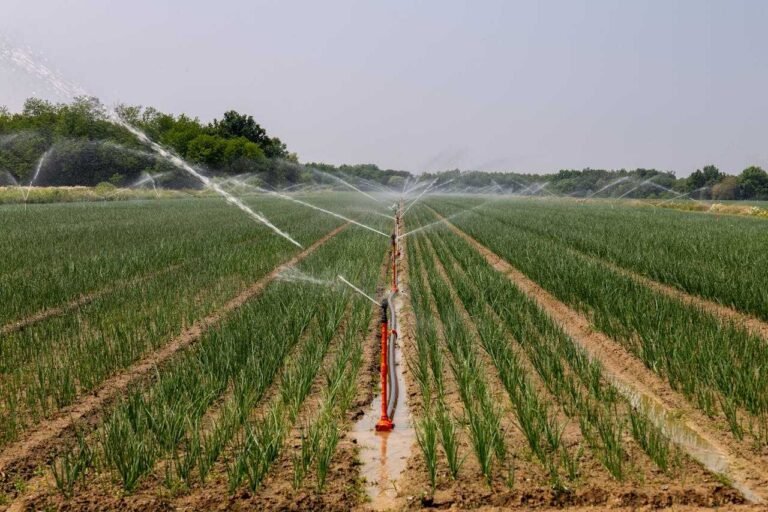Crop Monitoring Technology: The Future of Sustainable Farming
Farming has always been a gamble. One season, the rains come just right, and the harvest is plentiful. Next, a dry spell or a sudden pest outbreak can wipe out months of hard work. My grandfather used to say, “Farming is part knowledge, part luck.” But today, that “luck” is being replaced by science and technology.
Imagine a world where farmers don’t have to guess when to water their crops or how much fertiliser to use. Instead, tiny sensors in the soil measure moisture levels, satellites track plant health from space, and artificial intelligence predicts disease outbreaks before they happen. Farmers can access all this information on their smartphones, making growing food efficiently and sustainably easier than ever.
Crop monitoring technology is changing the way we farm. It’s helping us use less water, fewer chemicals, and fewer resources, all while growing more food. And in a time when climate change and population growth put pressure on global food supplies, this technology isn’t just helpful—it’s necessary.
In this guide, we’ll explore how crop monitoring is making farming smarter, greener, and more sustainable, with real-world stories, expert insights, and the latest research.

In This Article
- What is Crop Monitoring Technology?
- The Role of Crop Monitoring in Sustainable Agriculture
- How Technology is Combatting Climate Change in Farming
- Case Studies: How Farmers Are Using Crop Monitoring Technology
- Overcoming Barriers to Adoption
- The Future of Crop Monitoring Technology
- Actionable Steps for Farmers & Agribusinesses
- Conclusion
What is Crop Monitoring Technology?
Crop monitoring technology refers to a suite of tools that use remote sensing, data analytics, and automation to track crop health and environmental conditions in real-time. In simple terms, it’s about using smart technology to help farmers make better decisions—whether it’s knowing when to water crops, detecting plant diseases early, or predicting weather changes.
This technology includes:
- Satellite & Drone Imaging – These high-tech tools capture detailed images of farmland, helping farmers spot problems like drought stress or pest infestations before they become serious. Instead of walking through endless rows of crops looking for issues, farmers can see everything from above.
- IoT-Based Sensors – These tiny devices are placed in the soil to track moisture levels, temperature, and nutrients. If the soil is too dry, the system can alert the farmer or even trigger automated irrigation, saving water and preventing overuse.
- AI & Machine Learning – Artificial intelligence can analyse massive amounts of data to predict pest outbreaks, detect plant diseases, and suggest the best times to plant and harvest. Farmers don’t have to rely on trial and error—they get science-backed recommendations.
- Big Data & Cloud Computing – Farming generates an enormous amount of data, from soil health records to weather forecasts. Cloud-based systems store and analyse this data, giving farmers instant access to valuable insights that improve crop yields and sustainability.
These technologies work together to reduce waste, optimise resource use, and increase sustainability, essential in a world where climate change threatens food security.
The Role of Crop Monitoring in Sustainable Agriculture
Reducing Water Waste & Improving Irrigation
Water is one of agriculture’s scarcest resources, yet for decades, farmers have relied on inefficient irrigation methods that often waste more than they conserve. Picture this: a farmer sets up an irrigation system based on routine schedules rather than actual soil moisture levels. The result? Crops may be overwatered, leading to runoff and nutrient loss, or underwatered, causing stress and lower yields.
In drought-prone regions like California, where every drop of water matters, farmers are turning to precision irrigation—a game-changing approach powered by IoT-enabled soil moisture sensors. These sensors measure exactly how much water crops need in real-time, sending data to farmers’ smartphones or computers. Research from UC Davis highlights the benefits of precision irrigation management, which is covered in their Precision Irrigation Management course (EBS241). Additionally, a review article titled A Review of Precision Irrigation Water-Saving Technology under Changing Climate discusses how these technologies enhance water use efficiency, improve crop yields, and reduce environmental footprints. These advancements mark a breakthrough for both sustainability and profitability in modern agriculture.
Minimizing Chemical Use with Smart Fertilization
Beyond water, fertiliser misuse is another pressing issue in agriculture. When farmers apply too much fertiliser, it doesn’t just go to waste—it pollutes water bodies, depletes soil health, and contributes to greenhouse gas emissions. Traditional methods involve a blanket application, but modern crop monitoring tools pinpoint exactly where and how much fertiliser is needed, reducing waste and environmental harm.
Expert Insight:
“By using satellite-based nutrient mapping, farmers can apply fertilizers only where needed, reducing nitrogen runoff into water bodies. We’re trying to reduce the total number of nitrogen units that we apply, but more importantly, we want to avoid losing fertilizer to the environment.”
— Scott Henry, Farmer (Environmental Defense Fund)
This means healthier crops, lower costs, and less damage to surrounding ecosystems. In regions where chemical runoff threatens biodiversity, precision fertilisation is proving to be a powerful tool for balancing productivity with environmental responsibility.
Learn More: How Does Industrial Agriculture Promote Farming Techniques that are Ecologically Destructive?
Enhancing Soil Health & Preventing Erosion
Soil isn’t just dirt—it’s a living, breathing foundation for agriculture. However, due to over-farming, deforestation, and climate change, soil degradation is becoming a silent crisis, leading to reduced fertility and increased erosion. Crop monitoring technologies, such as AI-driven soil assessments, provide real-time data on pH levels, organic matter, and compaction, helping farmers make informed decisions about crop rotation, cover cropping, and regenerative practices.
Real-World Example:
In Brazil, coffee farmers are increasingly adopting AI-powered technologies to enhance soil management and boost productivity. For instance, the Cerrado Coffee Growers Federation has implemented a program offering specialized services in restoration, climate-smart agricultural practices, and efficient water resource management. This initiative has led to significant improvements in soil and water health across 1,143 hectares, achieving an 86.63% carbon management index. Additionally, an irrigation project utilizing electronic sensors resulted in a 30% water savings during its pilot phase.
How Technology is Combatting Climate Change in Farming
Climate change is disrupting growing seasons, increasing extreme weather events, and altering pest populations. Farmers, who depend on stable weather patterns, are facing some of the biggest challenges in history. Crops that once thrived in certain regions are now struggling, rainfall is erratic, and invasive pests are spreading faster than ever.
But here’s the good news: crop monitoring technology is helping farmers fight back. By using real-time data, AI, and satellite imaging, farmers can make smarter decisions to protect their crops and adapt to this new reality.
| Climate Challenge | How Crop Monitoring Helps |
|---|---|
| Unpredictable Rainfall | Smart irrigation systems adjust water usage based on real-time weather data. |
| Rising Temperatures | Heat-resistant crop varieties identified using AI-based genetic mapping. |
| Increased Pests | Machine learning detects pest outbreaks before they cause damage. |
Satellite-Based Climate Adaptation
NASA and the European Space Agency (ESA) are pioneering satellite-based technologies to help farmers adapt to climate change. NASA’s ECOSTRESS mission uses thermal imaging to detect plant stress by measuring temperature changes, allowing farmers to optimise irrigation and planting schedules. This technology has significantly reduced climate-related crop losses in drought-prone regions. (NASA)
Similarly, the ESA’s Copernicus Sentinel-2 satellites provide high-resolution imagery to monitor crop health, soil moisture, and climate impacts, enabling precision farming strategies. The Soil Moisture and Ocean Salinity (SMOS) mission further aids drought prediction and water management, ensuring sustainable agricultural practices. (ESA)
With these advanced tools, farmers can move beyond reacting to climate change and proactively safeguard their crops, ensuring food security for the future.

Case Studies: How Farmers Are Using Crop Monitoring Technology
Drones Helping Rice Farmers in India
In India, small-scale farmers depend heavily on rice cultivation for their livelihoods. However, challenges such as unpredictable monsoons and crop diseases, particularly fungal infections, pose significant threats to their harvests. Traditionally, the early detection of these diseases was difficult, leading to extensive crop losses and excessive pesticide usage.
To address these issues, agrotech startups have introduced drones equipped with multispectral cameras. These drones can scan rice fields from above, identifying early signs of disease before they become visible to the naked eye. This technology enables farmers to receive real-time alerts, allowing them to target only the affected areas for treatment, thereby reducing the need for blanket pesticide application.
Results:
- Cost Reduction: The use of drones has decreased the cost of plantation by nearly 85%, primarily due to reduced labour requirements.
- Increased Yields: Implementing drone technology has led to a reported 30-35% increase in crop yields.
- Resource Efficiency: Farmers have experienced up to a 70% reduction in resource consumption, including water and fertilizers.
AI Fighting Locust Swarms in Africa
In East Africa, locust swarms can devastate entire farms within days, leading to severe food shortages for millions. To combat this, an AI-powered tool called PlantVillage Nuru has been developed to assist farmers in the early detection of locust outbreaks. Utilising smartphone cameras and machine learning, this technology identifies locust activity promptly, enabling communities to take action before swarms escalate.
Impact:
- Locust Control: The World Bank’s Emergency Locust Response Project has financed locust control operations on over 530,000 hectares across Djibouti, Ethiopia, and Kenya, significantly contributing to managing locust infestations and protecting agricultural livelihoods in the region.
- Farmer Adoption: PlantVillage Nuru has been instrumental in assisting over 200,000 farmers in Kenya and Ethiopia to combat locust outbreaks.
Overcoming Barriers to Adoption
While crop monitoring technology offers huge benefits, adoption remains uneven due to financial, technical, and infrastructure challenges, making it hard to access these life-changing tools.
1. High Initial Costs
The biggest hurdle? Cost. Advanced tech like AI-driven sensors, drones, and satellite imagery isn’t cheap, and small-scale farmers often can’t afford it. Governments and organisations are stepping in with subsidies, low-interest loans, and public-private partnerships to help farmers invest in smart farming without financial strain.
2. Lack of Digital Skills
Many farmers have spent decades relying on traditional methods and may not be comfortable with digital tools. Without the right training, even the best technology is useless. Programs focusing on digital literacy and hands-on training are critical in bridging this gap.
3. Connectivity Issues in Rural Areas
Tech-driven farming needs internet access, but many rural areas lack reliable networks. The expansion of satellite-based internet services, like Starlink and government-backed rural broadband projects, is helping farmers stay connected.
Expert Insight:
“Expanding rural connectivity is crucial for the future of agriculture. Without reliable internet, small farmers risk falling behind in adopting new technologies that can boost productivity and sustainability.”
— Dr. Christopher Ali, Rural Broadband Expert & Author of Farm Fresh Broadband
Learn More: How to Start Vertical Farming At Home
The Future of Crop Monitoring Technology
As technology evolves, the future of farming looks even more efficient and eco-friendly. Emerging trends include:
- AI-Driven Predictive Analytics – Artificial intelligence can now analyse weather patterns, soil conditions, and crop health to help farmers make better decisions before problems arise. This means fewer losses and higher food production.
- Biodegradable Sensors – Traditional sensors create electronic waste, but new biodegradable materials are being developed to monitor soil health and then break down naturally, leaving no harmful footprint.
- Space-Based Farming Insights – Satellites can track real-time crop health, water levels, and soil conditions across entire regions, helping farmers and policymakers respond quickly to droughts, floods, and pest outbreaks.
Research Spotlight:
A 2024 study published in Nature Communications found that integrating AI-driven optimization with remote sensing technologies in agricultural water management led to a significant increase in crop yields while reducing water usage. This approach highlights the potential of AI and satellite monitoring to enhance food production sustainably.

Actionable Steps for Farmers & Agribusinesses
If you’re a farmer or work in agribusiness, here’s how to implement crop monitoring technology effectively:
- Start Small: Begin with affordable soil moisture sensors to understand water levels. Once comfortable, expand to drones or AI-powered disease detection. Small steps lead to big savings and higher yields.
- Use Open-Source Platforms: Many governments and NGOs provide free satellite imagery and weather-tracking tools. These can help you make data-driven decisions without costly investments.
- Join Digital Farming Communities: Platforms like FarmLogs and Climate FieldView connect you with other farmers, share real-time data, and offer insights based on millions of acres of farmland.
- Seek Grants & Support: Many countries offer financial help for adopting smart farming tools. Check with agricultural ministries, NGOs, or local cooperatives—there’s money out there to support your sustainability journey.
Conclusion
Crop monitoring technology is more than just an innovation—it’s a necessity for sustainable agriculture and environmental protection. By reducing waste, optimising inputs, and helping farmers adapt to climate change, these technologies pave the way for a more resilient global food system.
As we move toward precision farming, the balance between technology and traditional wisdom will shape the future of food production. Whether you’re a small-scale farmer or part of a multinational agribusiness, embracing these tools today will ensure a more productive, sustainable, and food-secure tomorrow.
The future of farming is digital. Are you ready to grow with it?







